Thinned seedlings can be replanted if they are a hardy seedling variety. Onions, lettuce, broccoli, cauliflower or annual flowers such as petunias are all fine to replant once they have been thinned. Most seedlings are worth trying to replant if you have the space as most will recover if they are transplanted carefully.
Root vegetable seedlings like carrots, swedes and turnips can struggle to recover after being transplanted. While the seedling may continue to grow, carrots can grow wonky or can die if their tap root has been damaged.
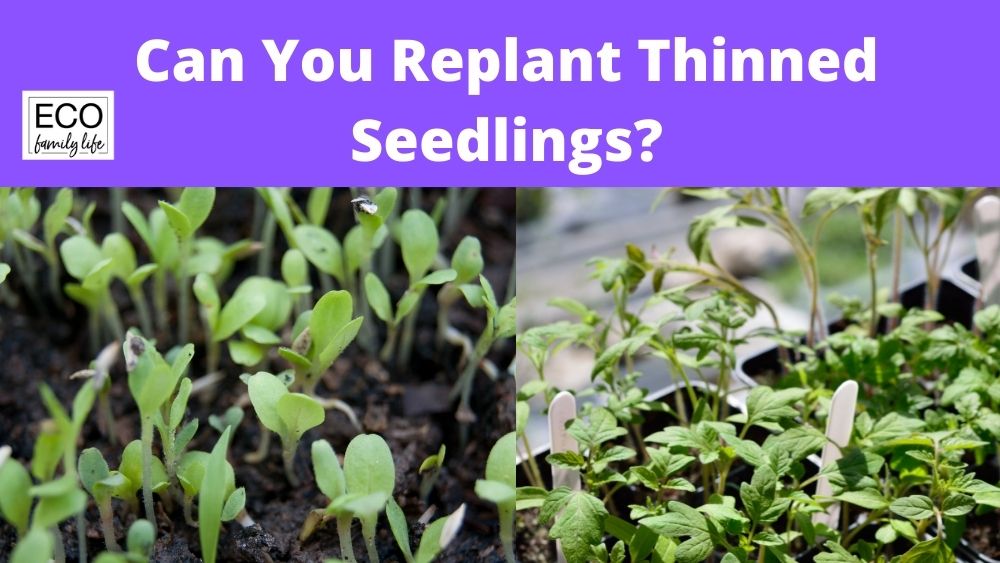
Eucalyptus trees can also struggle to grow after being transplanted as they grow with a tap root. If this is damaged, then they can die quickly.
This article will explore how to replant thinned seedlings with success, when to transplant seedlings and what to do with leggy seedlings.
How to replant thinned seedlings
If seedlings are removed carefully and their roots are not damaged, most can be replanted after they have been removed.
Seeds that have been planted straight into the soil, can be thinned out and the rest left in the soil. Those removed can be planted in another area of your garden, others can be planted out into pots or raised beds. Here are the easy steps to replant thinned seedlings.
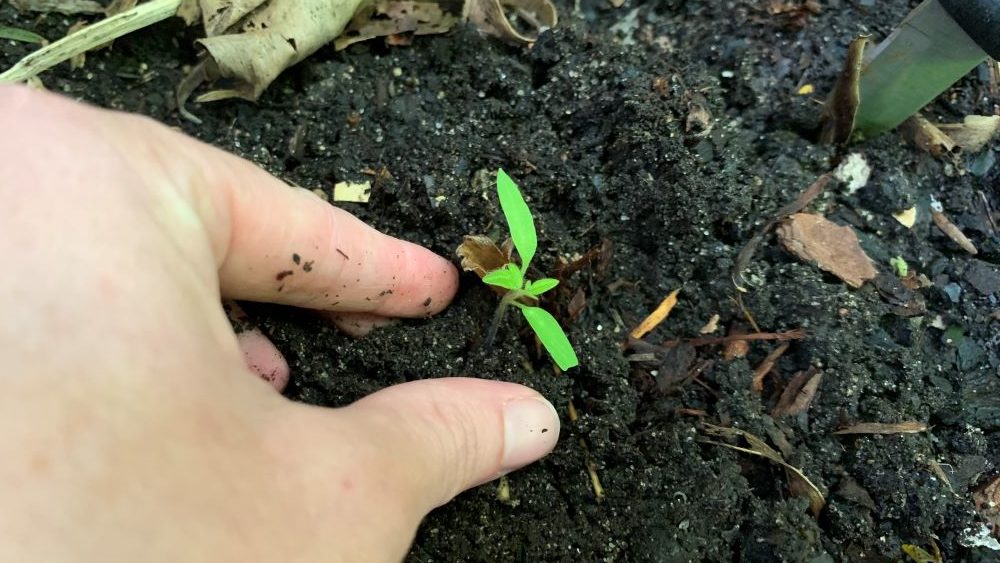
Seedlings can be transplanted once they are 1 inch high. Waiting until they are larger can make it more difficult to successfully prick them out and remove them without damaging their roots.
1. Prepare the soil first
Before removing or thinning any seedlings make sure you prepare their new home first. If you are planting them straight into your ground soil, mix through compost and aged cow manure to lighten the soil and add organic matter.
Mix the soil thoroughly and try to remove any large lumps that might block the root growth. This will make sure that the roots have the best chance of reaching out and growing strong.
2. Make a hole for the transplanted seedling
Take a small stick or chopstick and make a hole, ready to grow the new seedling. Make it slightly deeper than the current depth of the root system. That way the roots can reach deep and straight giving them the best chance of success.
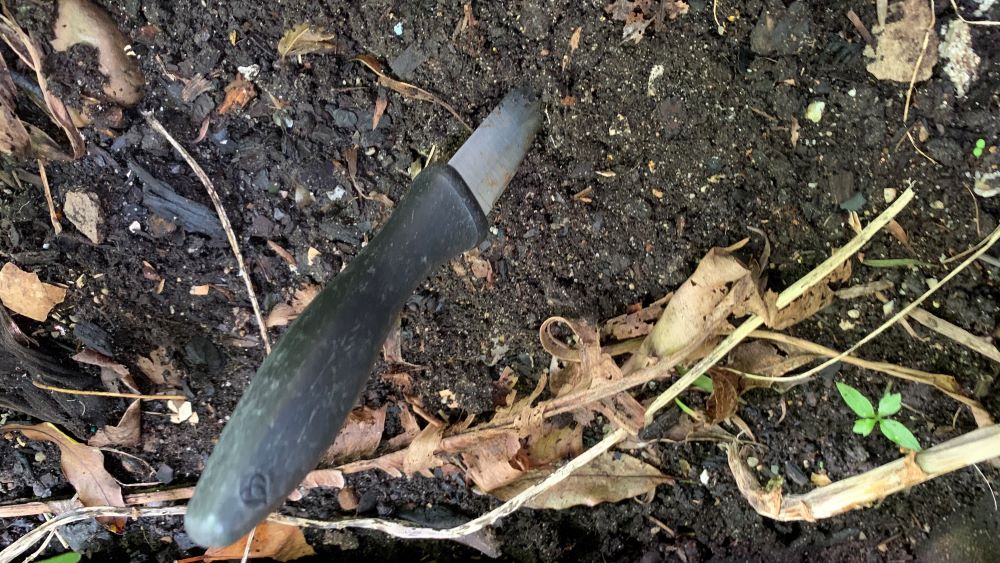
3. Remove the seedlings by lifting
Gently remove small seedlings, around 1 inch tall by digging under them and lifting the soil. This can be done with a chopstick, fork or knife. Lift the seedling up from underneath their root system.

Once the seedling has been lifted free, gently pull it from the soil by holding one of the bottom leaves. If you are moving tomato seedlings, try not to touch the top, delicate leaves. The first leaves will die back eventually anyway so grab them from there.
4. Place the seedling in the hole
Gently take the seedling over and place it in the hole. Use a stick or chopstick to push the roots into the hole so they fall in straight. Make sure the roots are not tangled or bunched up as you place the plant in the hole.
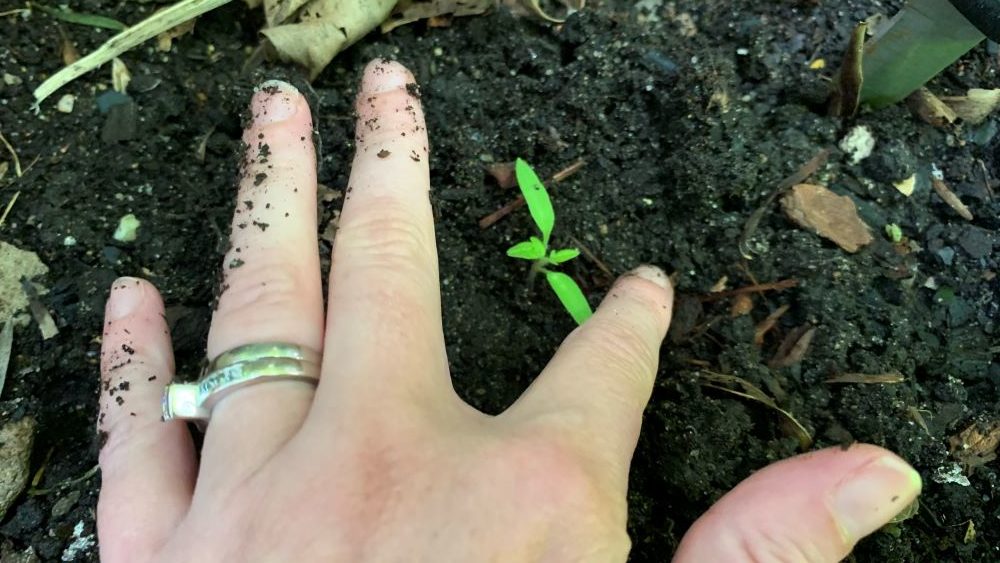
Press the soil around the seedling roots to make sure that it is held in gently. Press the soil around the plant to keep it upright and to fill any large air pockets. Avoid pressing to hard to so the roots are not damaged.
5. Water gently
After planting the new seedling water them in gently with a mist sprayer or mist attachment to your hose. This will keep the roots surrounded with soil, and help them to recover fast.
6. Keep the soil moist until they establish
After transplanting seedlings, make sure you keep them moist. This will help to reduce transplant shock and help them to recover fast. Most seedlings will slow their growth after they have been moved but will grow rapidly after 1-2 weeks.
How big do seedlings need to be before transplanting?
Seedlings can be separated and transplanted from around 1 inch tall. If they are growing close together it is essential to separate them out to give each plant the best chance of thriving.
Some plants such as beetroot actually grow in seed clusters of four. This means that there are usually 3-4 seedlings that appear in the same space. They can be lifted and transplanted with success if they are taken out gently and the roots are not damaged.
If you are pricking out and thinning seedlings such as lettuce, brassicas, tomatoes and peppers, they will recover if they are moved at this size. It is essential to transplant them into good quality soil, and to water them well to help them recover.

Seedlings can be transplanted when they are larger and more established. Once they are 2-3 inches tall they will transplant well if they are growing with enough space. Once seedlings get larger, and are still close together, they can be difficult to separate. It is best instead to thin them out when they are small.
Can you thin leggy seedlings?
Leggy seedlings can be thinned in the process of helping them to recover. Once seedlings have grown long and are bending over it is best to remove excess seedlings to give the other the space to grow well.
I like to cover them with half a soda bottle with the bottom cut off. Move them into brighter light to help them to strengthen their stems.
Can you replant thinned seedlings? | Summary
Seedlings can be thinned and replanted if this is done early, the soil is prepared well and the seedling is hardy. Most leafy greens, annual flowers, brassicas and tomatoes can all be transplanted after thinning successfully. Keep the thinned seedlings moist after transplanting to help them recover.
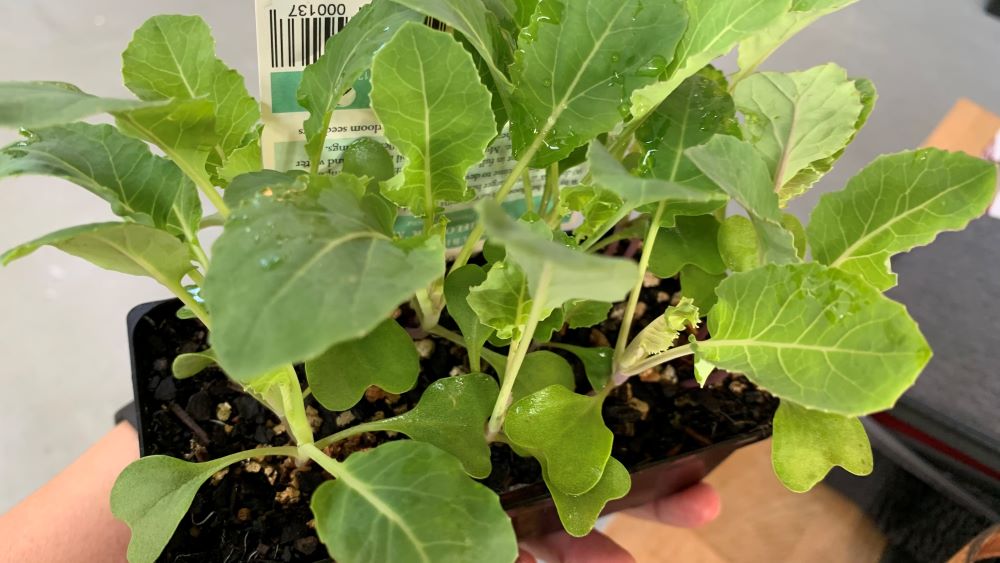
Seedling growth can slow after they have been lifted out of the soil but they will bounce back and grow rapidly if they have been transplanted well after 1-2 weeks.
I don’t like wasting seedlings so I always like to prick them out and give them a chance to grow if they will. Prepare potting soil if you have run out of space in your garden and share the seedlings with your friends.
Happy growing.
I am an accredited practicing dietitian, experienced gardener and a dedicated cook. I love writing and sharing my experience so you can learn from my successes and mistakes.
